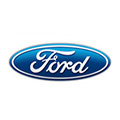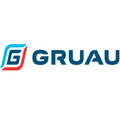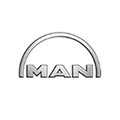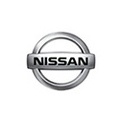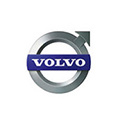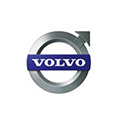03_2017 The end of ownership in the automotive world
Although theories heralding the end of the era of ownership seem to be too far-fetched in the context of the Polish automotive world, there is no doubt that tendencies that will deeply alter the present-day format of vehicle ownership are noticeable globally. The dynamics of these changes corresponds with the degree of the technological advancement of the individual societies, as well as with the current economic context. On the other hand, the reach of the shift in question may go as far as to affect two subsequent generations to come. So what’s changing? More than anything else, it's about the way in which the individual burdens connected with vehicle ownership are perceived, as well as how people determine their own needs in this respect. In view of that, consumers will be gradually moving away from vehicle ownership which, however, doesn’t mean that they will no longer use cars altogether. Read more >>
The primary significant differences with regard to how consumers perceive property rights in the automotive context can be exemplified by the differences between generations X and Y (the so-calledMillennials). It is a phenomenon that affects most societies that can be considered technologically advanced (or highly technologically advanced). As far as the Polish context is concerned, there is still a significant impact of the previous political system, which created a shortage of basic consumer goods by definition. Living or growing up in the realities of communist-era Poland, with a considerably hindered opportunity to own and acquire property, generation X has developed a relatively strong attachment to property rights. Ownership of particular items has become elevated to a status symbol, and this is especially true with regard to cars.
Aware of the ongoing changes, we ran theAutomotive Generationstudy in 2014, which revealed what kind of automotive-market behaviour can be attributed to the Polish consumer as examined in terms of their affiliation with generation X vs. Y. The Millennials represent a new standard in the consumer society. They are the first generation to have grown up in a free market reality, with no memories of the communist era at all. So what are the Millennials like? They are primarily interested in the here and now, and display no loyalty to brands or trends. They like change, and it’s likely that this particular trait has become the main driving force behind the shift in the automotive world discussed here. Y-generation consumers see vendors as competent sources of information and professionals, but also as their peers rather than figures of authority. Their purchase process is driven by a sense of liberty and independence. More so than their parents’ generation, they’re likely to reflect on how their decisions affect the environment or their own health. They move along the purchase journey using the basic principles of pragmatism (economy of time, product/ service availability and reliability, and cost optimisation) as their compass.
However, despite these observations, the fact remains that the Millennials were also growing up during a period of tumultuous economic changes ignited by the great financial crisis of 2007. This made them aware of the possibility of sudden, unforeseen changes and economic destabilisation, which in turn shaped their current attitude to ownership. This is the reason why the Millennials also consider the potential problems when they think of car ownership. As many as 82% of respondents in the study admitted that they considered car ownership a costly enterprise (use + maintenance), with 54% of generation-Yers stating that it’s simply not cost-effective to use cars for the purpose of travelling in cities. A further 51% of the respondents believed that driving a car is unecological in itself, and it would be better if people used other means of transport instead. These findings are not to be taken lightly.
The idea of sharing as one of the strongest trends
In the USA, the number of new cars purchased by consumers aged 18 to 34 dropped by 30% between 2007 and 2011. At the same time, transport services and mobile apps such as Uber or Blablacar emerged, all based on the principle of ride sharing at least to some degree. Simultaneously, municipal authorities across the globe have started work on launching city car rental systems, with the idea of sharing-based usage spreading to a growing number of sectors as well, e.g. the Airbnb portal established in 2007, which currently offers short-term lodging in over 200 countries. Another example is Leila, a store and rental service launched in Berlin in 2011, which allows consumers to rent tools necessary for tasks that are not normally performed often, and the purchase of which doesn’t make much sense in the long run, e.g. power drills. Finally, there’s EatWith, est. 2016 as a dining equivalent of Airbnb. There are also many other examples of similar services, and it’s safe to say that the idea of sharing has become one of the strongest trends of the recent years.
The future of the market lies in subscription-based offers
Data indicates that the percentage of Americans below the age of 45 with a driving licence is decreasing: whereas as many as 87% of 19-year-olds passed their driving test in 1983, the percentage has dropped to 69 today. There has been a downward trend in this area since 2008.
Looking at the global automotive market development trends, companies have come up with numerous strategies intended to serve as a response to the shift in consumer needs, as well as a new way of doing business. Subscription-based solutions and similar offers lead the way in this respect (e.g. HRV offers – or vehicle financing systems with low instalments, wherein the car is returned the dealership after a set period of lease, e.g. 3 years), and they have become widespread on the Polish market as well. This usage model allows consumers to always take advantage of a relatively (or even entirely) new car while retaining considerable freedom to change models. As solutions of this kind (which allow to spread and decrease the cost of ownership) became available, as many as 68% of consumers who had initially intended to purchase a used car declared interest in the HRV financing options when informed about the subscription-based offer, with 59% admitting that the structure of HRV offers convinced them to choose a new vehicle instead of a used one.
Our Great Dealership Test last year revealed that importers and dealerships alike are aware of the direction in which the market is going, as well of how appealing subscription-based offers seem to be. An HRV financing offer was presented to 68% of respondents who visited dealerships, with more than half of these offers (56%) presented on the sales manager’s own initiative.
Another solution that has been recently gaining popularity are automated city car rental systems that allow individual consumers to rent a car in order to travel from A to B. The growth of this means of transport is fostered by the fact that the networks are based on eco-friendly vehicles (usually fitted with electric or low-emission engines) and the low cost of usage. Solutions of this kind are becoming available in countries around the globe, e.g. in France, Germany, USA, Canada, UK, and Austria to name a few. The concept of car sharing has seen dynamic development in Poland as well. City car rental services have been launched (or will be in the nearest future) in Cracow, Warsaw, Wroclaw, and Lublin. The underlying mechanics are simple (with the differences between the individual systems remaining largely cosmetic), usually resembling those of the Traficar service: a special app has to be used to find a car in the nearest area, after which the user scans a QR code, performs a few simple administrative tasks (such as rating the car’s cleanliness), and is free to use the vehicle as they please, parking it at a convenient location when they no longer need it.
With all that in mind, it’s plain to see that the idea of sharing-based use is now present in the automotive world, radically altering the notion of vehicle ownership. These processes are a natural, subsequent stage in the market’s evolution. Whereas (for now) it might seem an exaggeration to talk about the end of the notion of ownership in the automotive sector, it’s interesting to see how vehicle manufacturers and importers around the globe are forced to redefine their terms of sale in order to stay relevant.
Private ownership generating a continuous and unavoidable cost is being replaced by access to sharing-based means of transport. The car is losing its former importance and is no longer perceived as the status symbol it used to be. Environmental issues (particularly important to the Millennials) are another important aspect of this process, with the advancement of new tech providing additional support. The sum of these factors results in the changes becoming ever more tangible and unstoppable, which creates new opportunities in the automotive business world.
Please contact:
Alicja Zalewska – Kantar TNS Automotive












